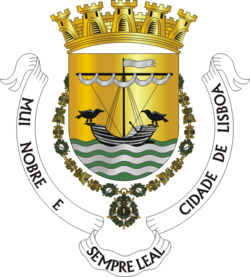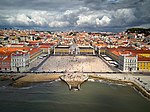Estremadura Province (1936–1976)

Estremadura Province (European Portuguese pronunciation: [(i)ʃtɾɨmɐˈðuɾɐ]) is a historical province of Portugal. It is located along the Atlantic Ocean coast in the center of the country and includes Lisbon, the capital. Other notable places include Almada, Amadora, Barreiro, Caparica, Peniche, Cabo da Roca, Caldas da Rainha, Alcobaça, Nazaré, Lourinhã, Torres Vedras, Montijo, and Setúbal. Estremadura should not be confused with Extremadura, the autonomous community of Spain. The name of both regions comes from the fact that they were at the "extreme" border of Christendom during a phase of the Reconquest. The meaning is therefore similar to the marches. Estremadura was the seat of one of the early civilizations of the Iberian Christianity period. See Vila Nova de São Pedro.
Excerpt from the Wikipedia article Estremadura Province (1936–1976) (License: CC BY-SA 3.0, Authors, Images).Estremadura Province (1936–1976)
Praça do Município, Lisbon Santa Maria Maior
Geographical coordinates (GPS) Address Website Nearby Places Show on map
Geographical coordinates (GPS)
| Latitude | Longitude |
|---|---|
| N 38.708041944444 ° | E -9.1390161111111 ° |
Address
Câmara Municipal de Lisboa (Paços do Concelho de Lisboa)
Praça do Município 1
1100 Lisbon, Santa Maria Maior
Portugal
Open on Google Maps







